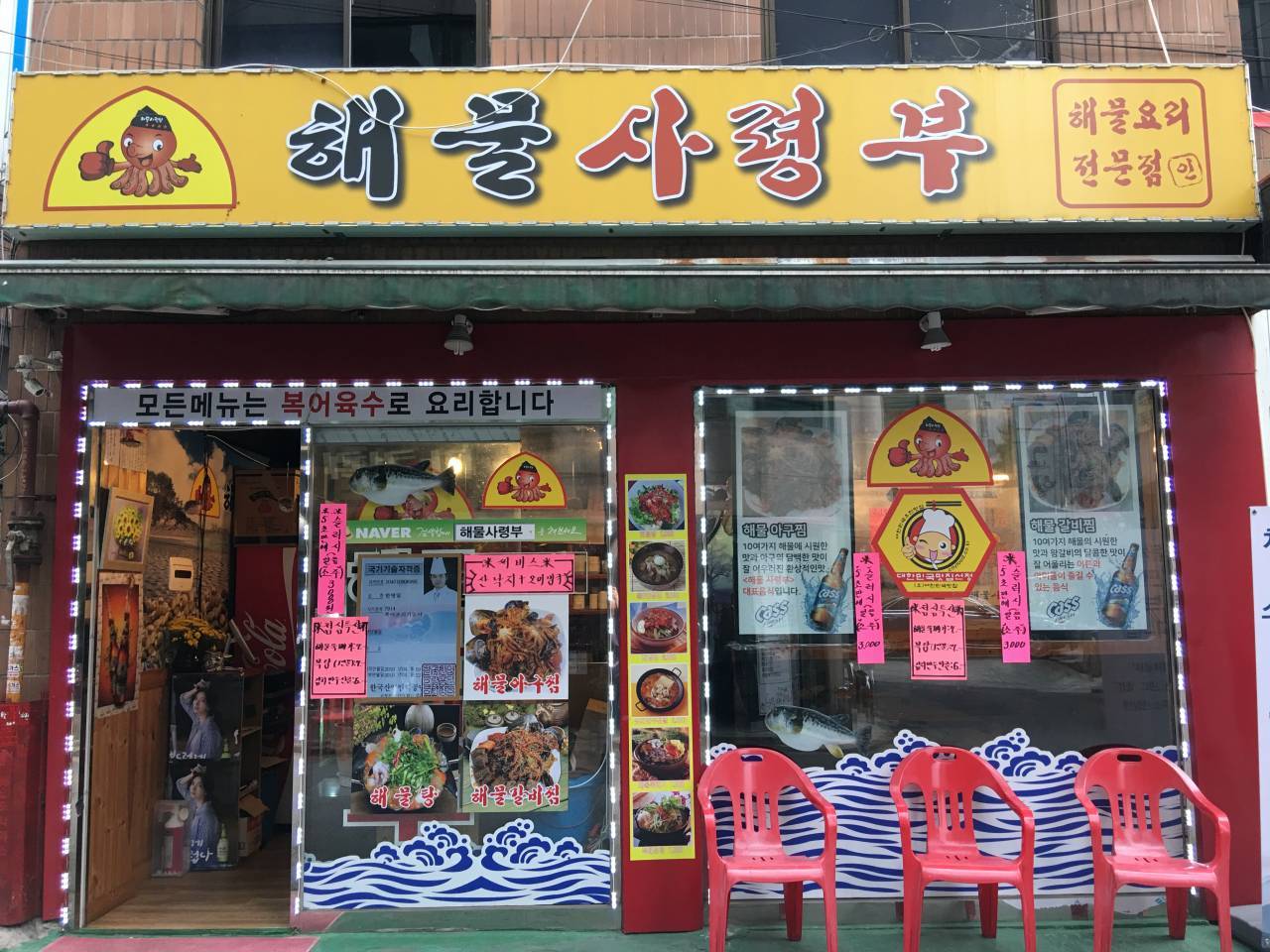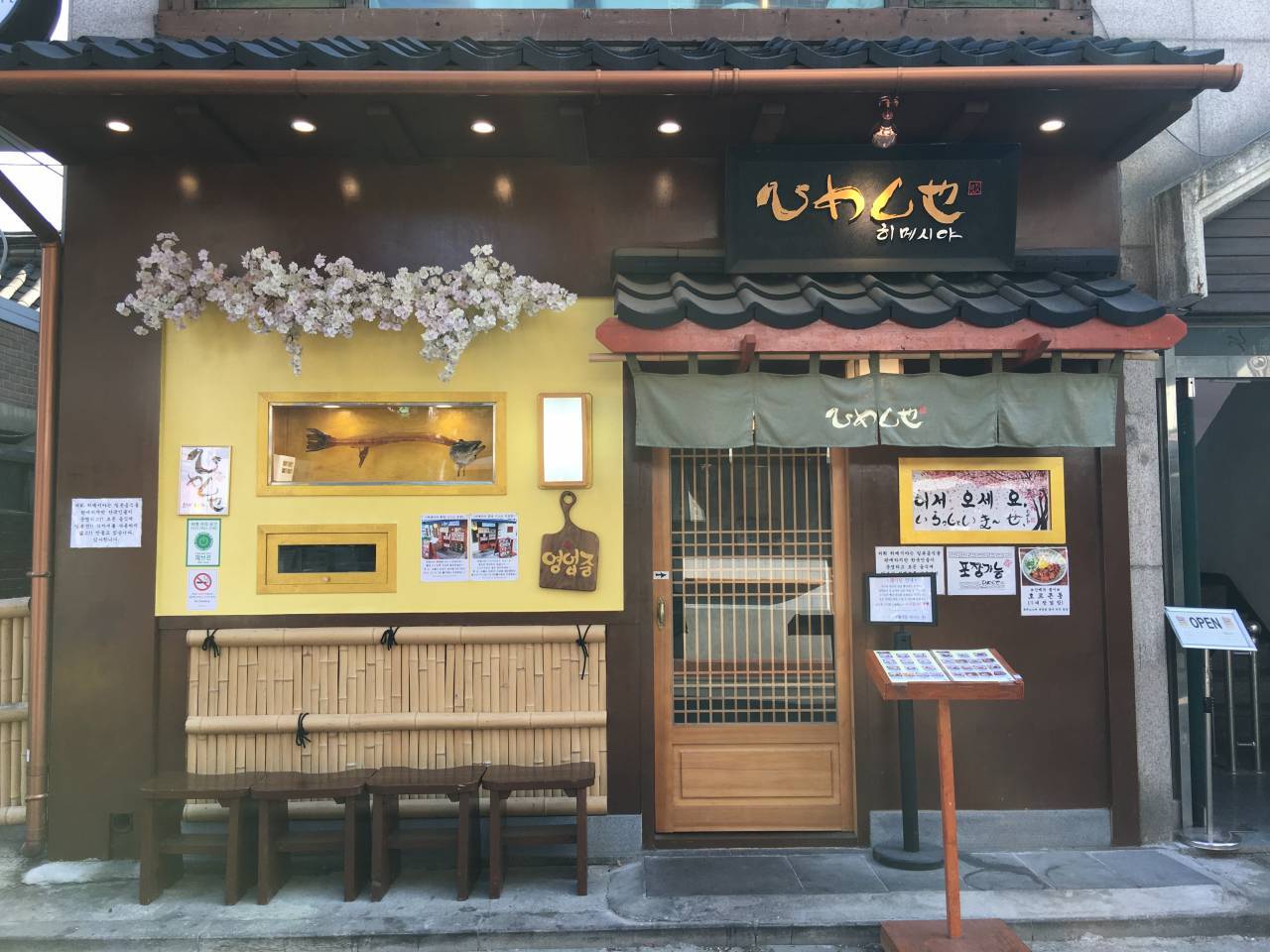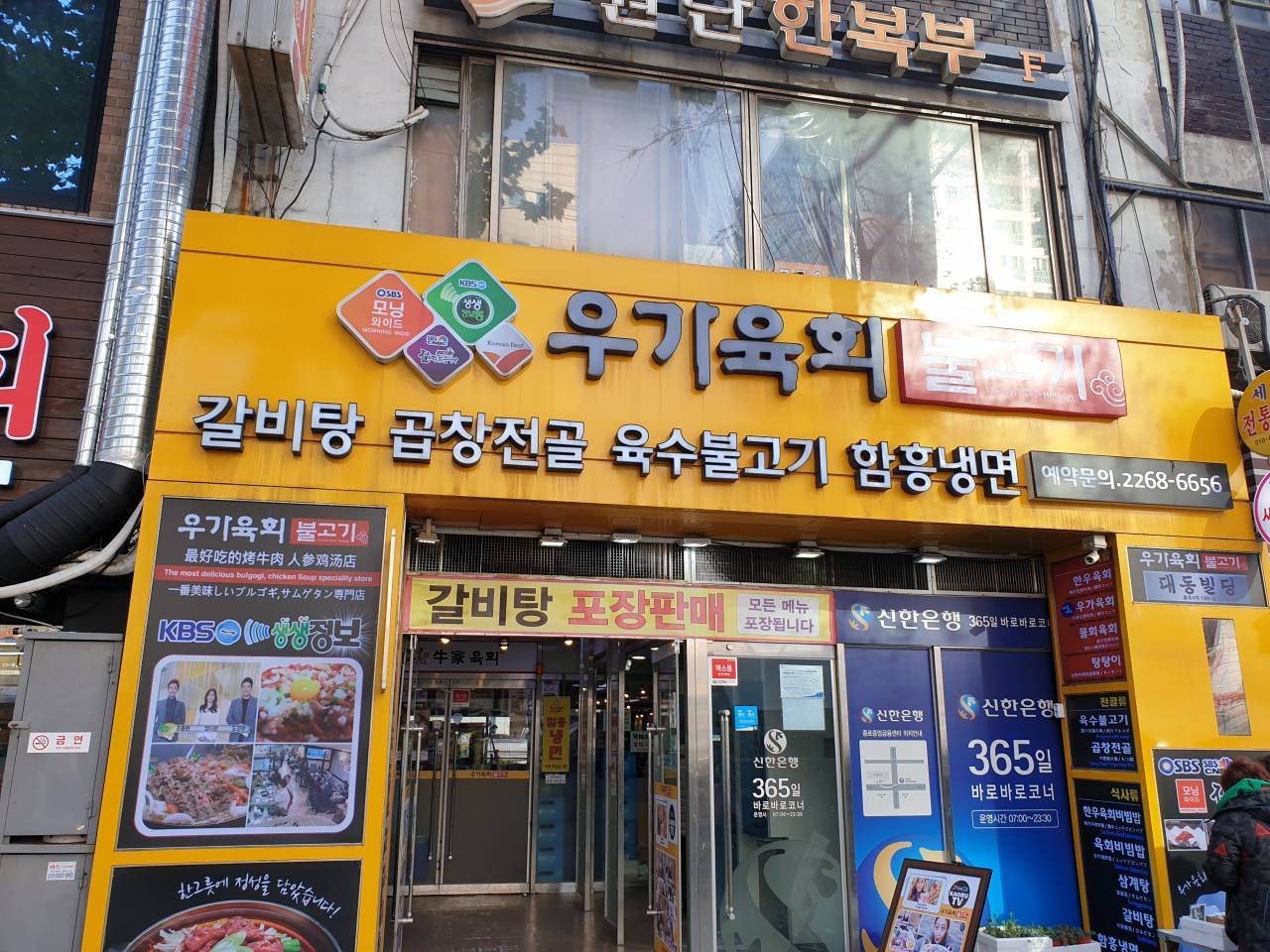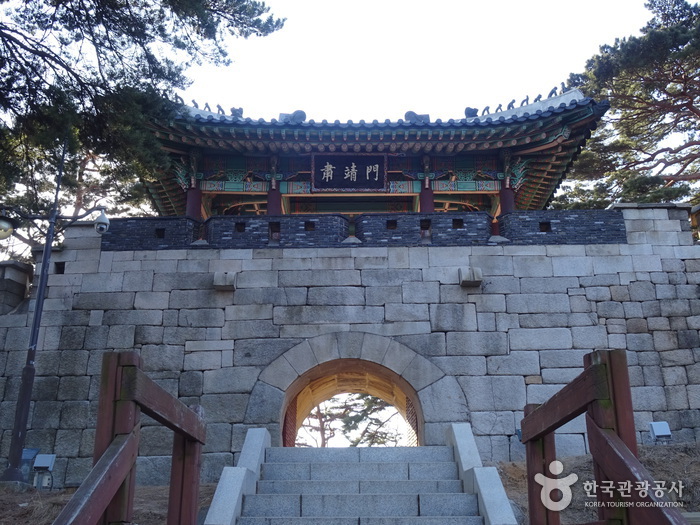Bukjeong Village (북정마을)
2.4Km 2024-02-15
132-3 Seongbuk-ro 23-gil, Seongbuk-gu, Seoul
Bukjeong Village, situated along the slopes of Seongbuk-dong, offers a glimpse into Korea's old alleyways. The village expanded as refugees from the Korean War (1950–1953) and people from various regions settled, building houses under the collapsed walls of Hanyang doseong (Seoul City Wall). Presently, the village is home to young artists, and the broad street in front of the village bus stop hosts various community events.
Haemul Saryeongbu (해물사령부)
2.4Km 2021-03-19
10, Jong-ro 31ga-gil, Jongno-gu, Seoul
+82-2-763-8882
Blowfish broth is used for all dishes. The representative menu is braised beef short ribs and seafood/braised spareribs and seafood. This is a Korean cuisine located in Jongno, Seoul.
Podowon Samgyetang (포도원삼계탕)
2.4Km 2021-03-18
41-5, Changgyeonggung-ro26-gil, Jongno-gu, Seoul
+82-2-743-6541
This is a Korean cuisine located in Daehak-ro, Seoul. The best menu at this restaurant is ginseng chicken soup. It sells Korean healthy cuisines.
Bourhill Esthetic (부르힐에스테틱)
2.4Km 2017-07-21
39-5, Daemyeong-gil, Jongno-gu, Seoul
+82-2-765-3374
Bourhill Esthetic (est. 2005) is a professional beauty shop located in Daehangno, Seoul. Nationally recognized, certified professional therapists offer hand care, foot care, skin care, and body care treatments. The shop uses only high-end international cosmetic brand products, 80% of which are from aroma therapy lines.
Himesiya (히메시야)
2.4Km 2021-03-18
40, Changgyeonggung-ro, 26-gil, Jongno-gu, Seoul
+82-70-4187-4569
This is a Japanese cuisine located in Changgyeonggung Palace, Seoul. This restaurant specializes in Japanese rice bowls with toppings. The best menu at this restaurant is katsudon.
Uga Yukhoe Bulgogi (우가육회불고기)
2.4Km 2021-03-19
198-2, Jong-ro, Jongno-gu, Seoul
+82-2-2286-6656
This Korean cuisine is located near Jongno 5(o)ga Station, Seoul. It is located at Yukhoe Alley in Gwangjang Market, one of Korea’s representative traditional markets. The representative menu is sliced raw beef.
Woo Lae Oak (우래옥)
2.4Km 2024-03-07
62-29 Changgyeonggung-ro, Jung-gu, Seoul
+82-2-2265-0151
Woo Lae Oak is a Pyeongyang naengmyeon (Pyeongyang cold buckwheat noodles) restaurant established in 1949. Its signature dish is the Pyeongyang naengmyeon, known for their clean and light broth. Alongside the onmyeon (warm noodles), they also serve bulgogi, which complements the warm broth perfectly. The restaurant is renowned to the extent that customers often line up to dine, and it was selected for the Michelin Guide 2023.
Uke. Zamezip (육회자매집)
2.4Km 2023-12-22
200-4 Jong-ro, Jongno-gu, Seoul
This restaurant is located in a corner of Gwangjang Market's alley, and its main menu is Yukhoe/Beef Tartare (raw beef made by cutting small pieces of beef with various seasonings). The lightness of raw meat, which cannot be found in grilled meat, and the harmony with the seasoning are impressive. If you eat it with egg yolk, sprouts, and pears served together, you can feel the depth of the true taste of raw meat. If you want to try something a little more Korean-style, try 'Yuktangi,' which comes with Tangtangi (a dish made by pounding wild octopus on a cutting board and cutting it into pieces) and Yukhoe. However, the octopus Yuktangi moves around when the food is served, so you must be careful.
Sukjeongmun Gate (북악산 숙정문)
2.4Km 2020-06-19
1, Daesagwan-ro, Seongbuk-gu, Seoul
+82-2-747-2152
Of the Four Great Gates (Sukjeongmun, Namdaemun, Dongdaemun, and Seodaemun), established by King Taejo in 1396, Sukjeongmun is called the north gate.
Located to the north of Seoul, this gate, with Gyeongbokgung Palace in the center and Changaemun (Jahamun) to the right, make up the wings of the north gate. Due to the possible danger of the area being damaged from all the pedestrians, the king in 1413 planted pine trees and prohibited passing this area. Henceforth, Sukjeongmun became a scenic walkway until the North Korean Communist infiltration of 1968, which prohibited the passing of all civilians.
The reopening of Sukjeongmun in April of 2006 has led to the opening of Bugaksan Mountain in April of 2007 and is in the process of dividing it into 3 courses. Bugaksan Mountain has been kept well-preserved due to a long period of restriction in this area, and if you climb the mountain, you will be able to see all of Seoul.
Gwangjang Market (광장시장)
2.4Km 2024-07-08
88, Changgyeonggung-ro, Jongno-gu, Seoul
+82-2-2267-0291
Gwangjang Market was the first permanent market in Korea and continues to thrive as a popular tourist destination today. The name Gwangjang means "to gather from afar and keep altogether." The market began as a small trading center that brought in goods from nearby regions, but has now grown into a large wholesale market selling a variety of goods, including upholstery, imported goods, groceries, dried fish, traditional goods, and more. The most popular section of the market is the food street connected to the East Gate, North Gate 2, and South Gate 1. The food street caters to a wide range of patrons due to the plethora of menus available. It is also one of the most recommended tourist attraction for international travelers.







 English
English
 한국어
한국어 日本語
日本語 中文(简体)
中文(简体) Deutsch
Deutsch Français
Français Español
Español Русский
Русский